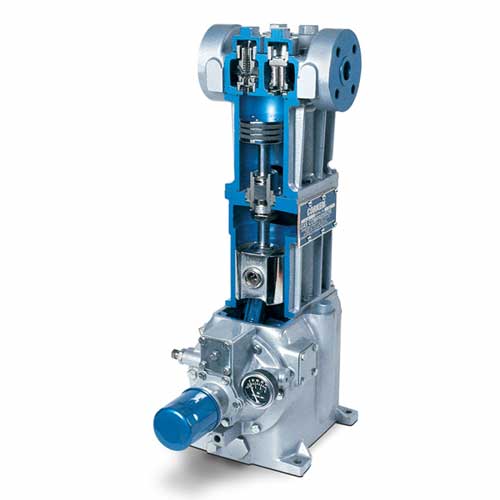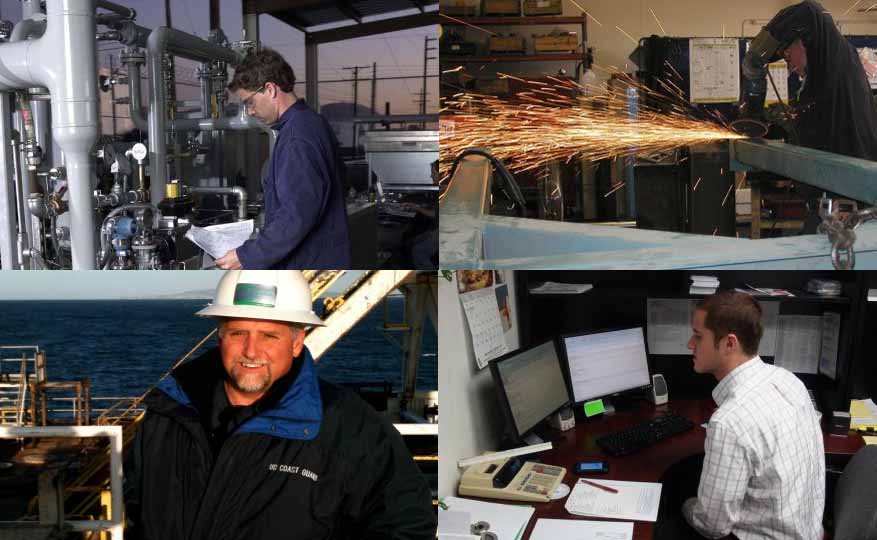
Reciprocating compressors are the most widely used type of compressor.
Reciprocating compressors are positive displacement similar to a typical bicycle pump.
The cylinder begins the cycle filled with gas at the intake pressure. The piston strokes inwards, decreasing the volume of the cylinder and therefore increasing the pressure. Once the desired pressure of the gas is reached, the discharge valve opens, and the piston pushes some of the high pressure gas out. At the end of the stroke, the piston reverses direction. Once the pressure of the remaining gas in the cylinder is the same as the intake pressure, the intake valve opens, refilling the cylinder.
Most reciprocating compressors are used to generate pressurized air. The compressors shown below are used to pressurize air in healthcare facilities. The most common applications in refineries are hydrogen-rich streams, refinery fuel gas, and refrigeration systems.
Applications
Industries
Call or message us today to learn how partnering with EWS can make your project a reliable success.
